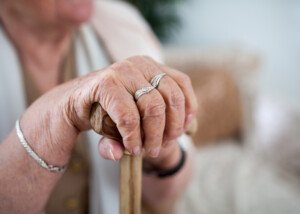
Here are three exercises that every caregiver should do to help prevent back and shoulder pain.
I know what the physical demands of caregiving are like due to personal experience with both parents.
And as a former personal trainer who’s had clients with back and shoulder issues, I also know which exercises are best at preventing back and shoulder pain.
If I could choose only three exercises for caregivers that would, more than any other type of exercise, prevent back and shoulder pain, they would be:
DEADLIFT
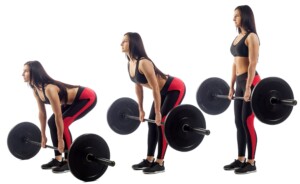
Shutterstock, Everyonephoto Studio
SQUAT
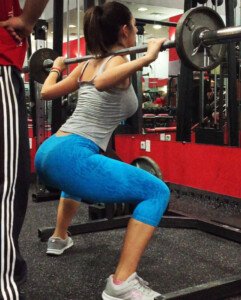
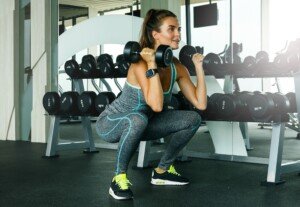
Shutterstock/BLACKDAY
BENCH PRESS
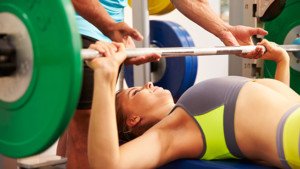
Shutterstock/Monkey Business Images
This doesn’t mean that there’s no such thing as a caregiver with back and shoulder pain who does at least one of these exercises. I’m sure there are.
Which brings me to my next point: HOW these exercises are conducted is just as important as actually doing them.
According to research by Amy Darragh, PhD, an occupational therapist from Ohio State’s School of Health and Rehabilitation Sciences, the small group of caregivers who were part of her study reported the following tasks as being problematic: transfers, toilet use, bathing, navigation of stairs and recovery from falls.
I urge all caregivers to seriously and intensely do the deadlift, bench press and squat.
I’ve been doing these for years, so when it was time to be a caregiver to my mother, I was already prepared.
However, if you’re currently caregiving and have not been working out; or, if you’ve been exercising but still suffer back and shoulder pain; or if you’re not a caregiver but foresee that one day in the future you will be — then by all means, follow my plan.
The key to the prevention of back and shoulder pain is to engage in the deadlift, bench press and squat using the following scheme: a five- to 10-repetition maximum.
This means you can perform at least five repetitions of any of these three exercises, but find that 11 at the same weight is absolutely impossible.
There are additional requirements for making these three multi-joint movements go a very long way at preventing back and shoulder pain in the caregiver:
#1. Master correct form. I can’t say this enough! Perfect form is mandatory.
#2. Be consistent. Twice a week is all you need.
#3. Warm up; don’t skimp here.
#4. Be progressive. This means don’t sit pretty at the same weight for months on end. Strive to increase the poundage over time.
#5. Crush any delusion that developing musculoskeletal strength via these exercises will result in unsightly muscles.
#6. Trust me. I took care of my elderly mother for four months after she had quintuple bypass surgery and mitral valve replacement, a pacemaker implant and two brain surgeries.
I had to deal with extreme non-compliance that was generated in part by her natural personality and also cognitive impairment that resulted from bizarre drops in blood pressure (which depleted oxygen supply to her brain).
Nobody was ever able to identify her blood pressure dives which began soon after the pacemaker implant.
But every time she exited a chair, within minutes she’d begin passing out, but not before her cognition became impaired — too impaired to realize she should have a seat to avoid fainting.
This meant I had to shadow her to prevent a fall. My father couldn’t because nine days prior to her heart surgery, he’d had back surgery and had limited physical abilities.
When my mother began passing out, no matter where she was, I had to be behind her to “catch” her and “sink” her to the floor or ground.
If I continued holding her upright, she’d pass out completely.
To restore blood flow to her brain, I had to sink her to the floor/ground.
This was done by slipping my arms under her armpits and lowering her 135-pound body gently (she was not able to assist, due to lack of wits due to the oxygen depletion) to the floor/ground, setting her first in a seated position, then leaning her back at an incline and waiting for adequate blood to reach her brain.
Sometimes during the sinking, her legs were stiff, nearly straight and non-functioning.
Once I saw her wits returning, I’d get into a squat-deadlift hybrid position, arms under her armpits, and straighten, lifting her to her feet, since these episodes would weaken her.
Once she was back on her feet, her blood pressure (mysteriously) was stable and she was able to function normally (until she sat down again for a while and then exited the chair…).
Caregivers report tremendous mental stress, and this can lead to impaired physical health of the caregiver.
Imagine my stress when my mother refused to alert me every time she exited a chair or bed. I had to keep her within my sight at all times.
But because I’m not omnipotent, during one of the few times she was out of sight (my bed was in my parents’ living room), she passed out in the upstairs bathroom while I was asleep.
I’ll never forget the sound of her head striking the bathtub. Six weeks later she underwent the first of two brain surgeries to drain a brain bleed.
I’m telling you this to establish myself as one who has experienced both the physical and mental demands of caregiving.
I once used the “sink” maneuver when my mother was passing out while trying to sit on a toilet.
I had to straddle the toilet behind her and do the maneuver, which involved a non-linear motion to get her on the floor.
If you’re strong at the deadlift, squat and bench press, you will be strong as a caregiver and be at low risk of back and shoulder pain — which I never experienced.
I did get several bad headaches and went five months without a period, but my back and shoulders never suffered.

